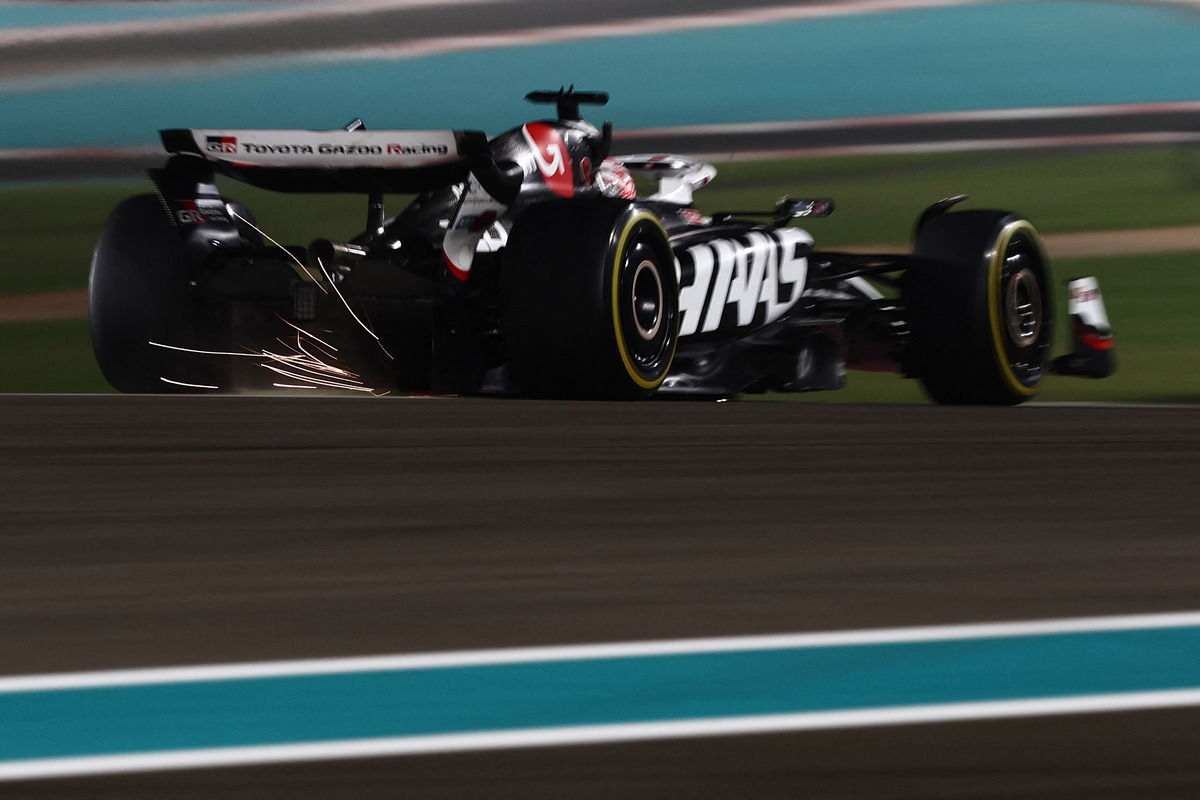

The two organisations joined forces last year in a deal that sees Haas gain from the Japanese giant’s technical prowess, and Toyota the opportunity to blood in young engineers and drivers.
This week, the relationship will hit the track for the first time in a two-day test at Jerez in Spain.
Using a 2023-spec Haas VF-23, it marks the first time in Haas’ history that it has conducted such an outing, which is technically referred to as a TPC (testing previous car) test.
Three drivers will be used over the course of the two days, with new race drivers Oliver Bearman and Esteban Ocon to be joined by Ritomo Miyata.
According to Haas, Bearman will start proceedings on Wednesday morning before handing over to Miyata.
The Japanese driver will then be back in the car on Thursday afternoon, following a spell from Ocon earlier in the day.
It will be Ocon’s second time behind the wheel of a Haas after electing to leave Alpine a race early in order to take part in post-season testing with the American-registered squad in Abu Dhabi at the end of the 2024 F1 season.
Haas’ regular duo will be joined by Miyata, a highly credentialed 25-year-old who raced with Rodin in Formula 2 last season.
That followed success in the 2023 Super GT championship, having dominated Japanese Formula 4, Formula 3, and Super Formula Lights in preceding years.
He is set to continue in Formula 2 this year, swapping to ART for the campaign.
While not using current machinery, TPC running is valuable for teams on multiple fronts.
Given Haas heads into F1 2025 with an all-new driver pairing it offers valuable running in one of the team’s cars (and one built to the current generation of regulations), and an opportunity to familiarise themselves with the systems, processes, ergonomics, and power unit.
It’s also a chance for the team and Toyota to expose young engineers and mechanics to Formula 1.
As the smallest team in F1, Haas previously did not have the resources to conduct a TPC test.
The relationship with Toyota affords it that luxury as one of the mutual benefits it offers.
Toyota is no stranger to F1 having competed as a factory team in F1 from 2002 until 2009 in what was widely considered an expensive failure – the well funded operation failing to score a single race win.
The company has since gone on to dominate sports car racing but has been linked with an F1 return on multiple occasions. Its current relationship with Haas is the closest it has come to rejoining the grid.
However, it has been suggested the current tie-up is a toe in the water ahead of a return, potentially in 2030.
Masaya Kaji, Toyota Gazoo Racing’s global motorsport director has gone on record to state that “what happens after 2030 is still uncertain,” and that the company is currently “studying technologies for 2026 and even current technologies.”
With a number of market rivals on the grid, and General Motors set to join next season, there is an increasingly compelling reason for one of the world’s leading automakers to take the plunge.
Under the current regulations, space exists for another team should the right candidate present itself.
Should it choose to do so, it is difficult to imagine F1 attempting to block Toyota as it did the entity now known as Cadillac.




















Discussion about this post